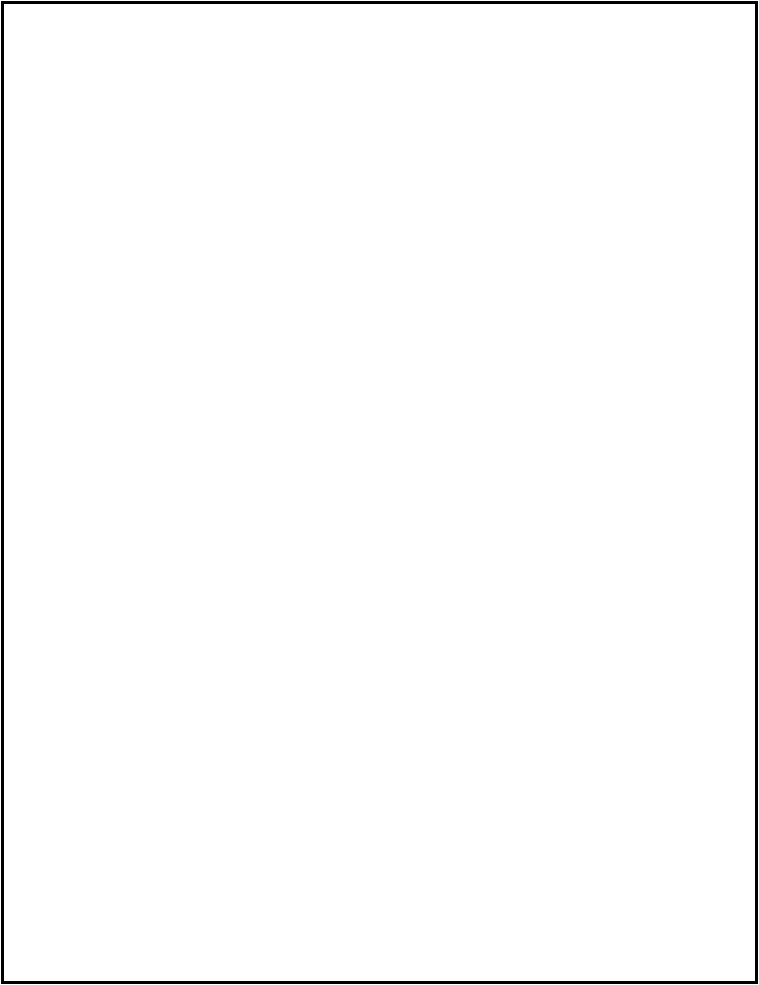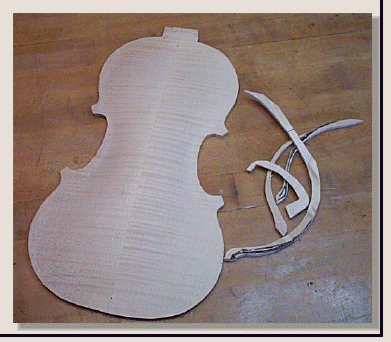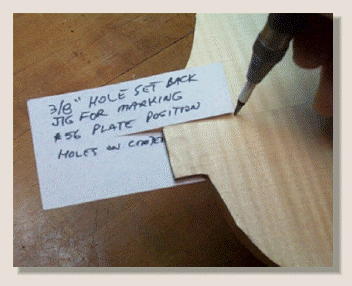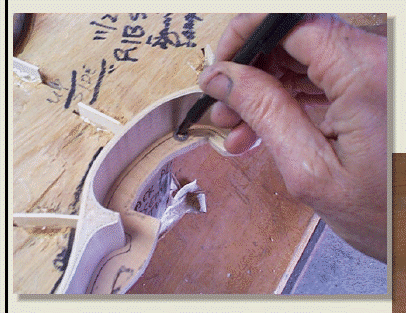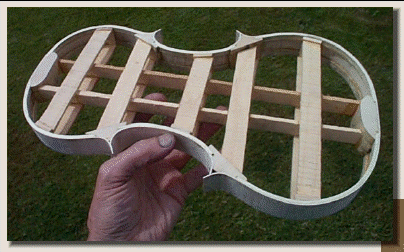The rib structure is gently pressed out of the master mold; the 'rib spyder' accurately holds the ribs in their proper shape while out of the master mold..
The rib structure is clamped to the back plate with four spring clamps at the corner blocks, carefulyl positioning the back plate to its finished position, and then turned over.
A mark is made on the center line and a # 56 drill hole is made though the plate and into the two end blocks 3/8" in from the ends (of the rib structure) and on the centerline for indexing the parts together. Insert the guide pins.
The plate is turned over and a line is traced around the outside with a small metal washer and pen or pencil. This line will be the finished outside of the violin plate.
It will finally be removed during the rounding of this edge later on.
Also mark the inside of the ribs along the glueliner strips (use an extended pencil lead). The area between these two lines is a finished area and must remain untouched in future operations.
The clamps are removed and the shape is cut out with a small band saw. Leave a slight distance from the guide line to the saw cut to allow for sanding to the exact profile later on.
Modified 9/2017
Page O16C_27
...For layout, to produce a true 3 /32" wide outline distance, I use a brass washer 0.373" Out Side Diameter, and 0.147" Inside Diameter; and 0.032" thick. I use an ink pen to I can clearly see.
..Mark end lines 1/16" out from rib points...
..Neck button shape is 0.827" (21 mm) wide and 0.493" to 0.512" in length past the plate overhang.(Stroble)
